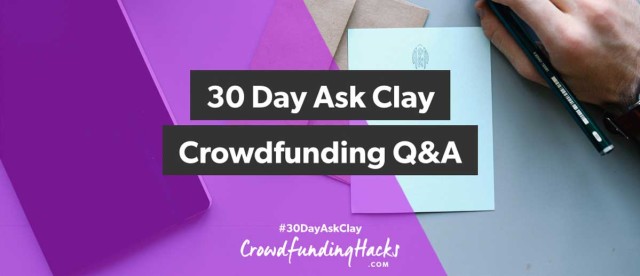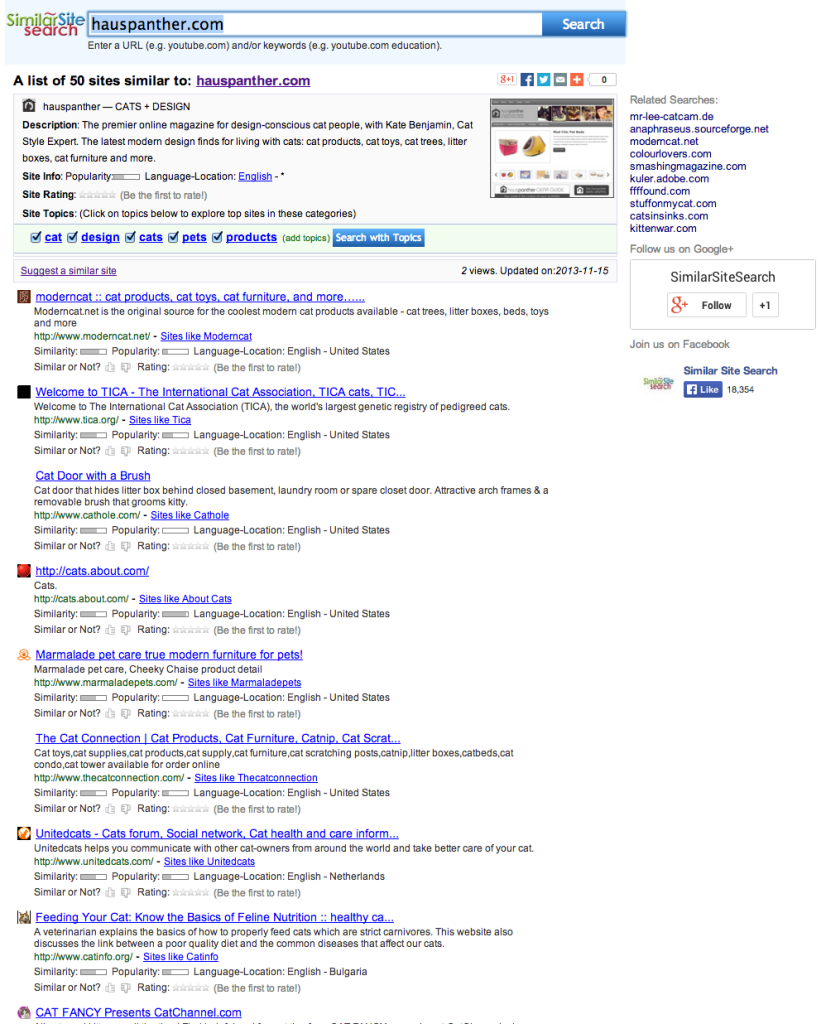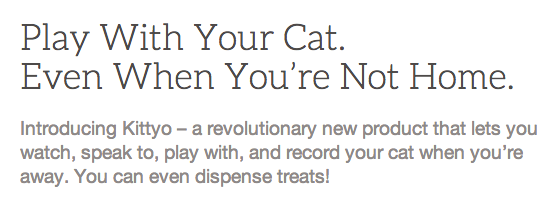How to crowdfund an app
In this post, I’m going to teach you:
- how to crowdfund an app
- why crowdfunding an app is different than crowdfunding other projects
- which reward level you should offer your app at
- how you should price your app
- the two key attributes of great reward levels
- how to increase your average contribution per backer
Why crowdfunding an app is different
Crowdfunding an app is different than crowdfunding other products for two main reasons.
- Consumers ALREADY expect apps to be cheap. People expect mobile apps to be either free or only cost a few dollars. For desktop apps (say, in the Mac App Store), the range is slightly higher, from free to $5-$20. And that’s the “full retail price” in the app store.
- You need to price your app EVEN CHEAPER when crowdfunding – When crowdfunding an app, you should charge less than the full price it will eventually cost in the app store or on your website to compensate the backers for the fulfillment risk they’re taking on. I call this pricing “below MSRP”.
Here’s why you need to price your app “below MSRP”:
- Your app is unproven. You haven’t launched yet. You haven’t scaled. There will be issues and bugs.
- They have to wait. Your app isn’t ready immediately. When people buy apps in the app store, they can download them instantly. You’re asking them to wait until you ship the app.
- It may never come AT ALL. Building apps is hard. Estimating development timelines is hard. The platforms (Kickstarter and Indiegogo) try to make sure that the creators can deliver but lots of apps never even finish and ship before they run out of funds. Of course, this won’t apply to your app, but it still contributes to overall fulfillment risk.
When people buy an app in an app store, they’re paying for a finished app, that has met certain app store requirements. It likely has lots of user reviews and will be delivered instantly.
When crowdfunding, you’re asking people you don’t know, for cash, ahead of time, to take a chance on your team’s ability to build and deliver the app you describe, on-time and on-budget.
For this, your early backers deserve a discount.
I suggest 50% off of full MSRP / app store price as a good rule of thumb. As you’ll see in the examples below, 50% off worked well.
Also, this means that the app itself should be the first and lowest priced reward level.
Unfortunately, this causes a problem
Pricing your app 50% cheaper than what you’ll sell it for once it’s available in the app store presents a problem.
The per-unit price is so low (half of a small number is a really small number), that even with a modest funding goal the math doesn’t work.
Let’s look at a simple example.
Let’s say you wanted to raise $20,000 (a solid but reasonable funding goal) for an app that will cost $2 in the app store, so you offer it at 50% off on your Kickstarter campaign.
At a $1 price point, you would need 20,000 backers. Most projects don’t get anywhere near 20,000 backers…
Fortunately, there is a simple solution to this problem…
You need to increase your average contribution per backer.
To do that, you need to offer more valuable perks above and beyond the app itself.
This is the point where most creators get stuck.
Since the app itself is “the thing being created” and it’s being offered at the lowest price point (which it should), most entrepreneurs struggle to think of what else to offer at a higher price point.
But that’s the key to crowdfunding an app.
You need to brainstorm and create other relevant and valuable perks, package them with the app at higher reward levels, and keep each reward level “below MSRP”.
Let’s look at two specific example campaigns and how they did exactly that.
Case Study: Gmail for Mac, by Zive (desktop app example)

Gmail for Mac is a campaign from Zive, a startup that I’m advising. They are developing a desktop client for Gmail. Over 400 million people use Gmail but most use it in a browser tab. Eric Shashoua and his team wanted to build a desktop app that was fast and lightweight yet retained all of the useful features of Gmail (power search, plugins and extensions, etc.).
Their Kickstarter funding goal is $20,000.
The app will cost $9.99 full price (MSRP) when it’s for sale in the app store.
So (for the reasons described above) we offered it to Kickstarter backers at $4.99, a 50% discount.
To hit $20,000 at $5 a pop, they would need 4,000 backers, which is a LOT of backers, even with a strong marketing plan.
So we brainstormed other reward levels that we could offer at higher price points and then bundle them with the app.
Here’s what we came up with. We ended up with 11 total levels including the lowest and cheapest level, which is the app itself.
(This isn’t about finding “tricks” to get higher pledges from people. Zive put a lot of effort into creating levels of real value to the backers, things they could get excited about.)
- $5 – EARLY BIRD GMAIL FOR MAC: Get a full copy of Gmail for Mac, as soon as we launch in the app store! (50% off of retail price!)
- $9 level – PLUS, GMAIL POWER SEARCH VIDEO COURSE: Learn How to Search Gmail to Find Anything in Under 10 Seconds – and get the most out of Gmail for Mac’s powerful email search.
- $14 level – PLUS, 15 TOP EMAIL TEMPLATES FOR GMAIL + THE PERFECT GMAIL SIGNATURE VIDEO COURSE: Get the most out of Gmail for Mac – Executive secrets to writing quick responses and mastering your email communication, tailored for Gmail.
- $21 – PLUS, THE GMAIL NINJA COURSE: The top 10 Gmail features you should use, but you don’t. Perfect guide to harness the unique power of Gmail for Mac over typical email clients.
- $28 – THE NO-BRAINER LEVEL + EARLY ACCESS TO NEW FEATURES: Everything and the kitchen sink. You get ALL of the Gmail bonus video courses PLUS the full copy of Gmail for Mac as soon as we launch in the app store, PLUS early priority access to new features to support popular Gmail plugins & add-ons like Rapportive and Boomerang. Early access means you’ll get priority access to these special features before they come out.
- $40 – THE SIX PACK: Everything above, plus five more licenses to give to your best friends and family. Holiday shopping? Done!
- $80 – THE TEN PACK: Everything from the NO BRAINER level, plus NINE more licenses. Give them to friends and family, your startup team or your favorite officemates. Holiday shopping done in November? Done!!
- $100 – PLUS, EARLY ACCESS TO GMAIL FOR MAC + ALPHA INSIDER TEAM: Want to get your hands on Gmail for Mac now? Get early access to the app very soon, before it even launches, and become an optional part of our alpha product insider team.
- $150 – PLUS, ONE HOUR STRATEGY CALL WITH FOUNDERS – All of the above, plus a video call with the Gmail for Mac founders; the CEO and CTO. Ask us about raising venture capital, selling a company while still in your 20s, getting featured in the Apple Store, a burning passion for software design — or anything else!
- $300 – PLUS PERSONAL GUIDED SETUP WITH FOUNDERS – We’ll help you personally setup and optimize Gmail for Mac, including full setup of the app, optimizing your settings, labs, contacts, and accounts, and helping you build your perfect email signature. Let the experts help you master Gmail, once and for all.
- $1,000 – THE STARTUP MASTERCLASS – Bring your whole team. The Zive team will meet with you or your team for one hour a month for 6 months, helping your startup think through marketing, growth, fundraising, product design, and development. We’d love to help you do awesomely with your startup!
Each additional perk met the two key attributes of all good reward levels:
- Is it relevant to the project?
- Is it valuable to the backer and priced “below MSRP”?
Did it work?
Absolutely. The campaign just passed $30,000 with 3 days to go.
Here is a breakdown* of Gmail for Mac’s backers by reward level and the percentage (%) of backers that each level represents.
- $5 – 1866 backers – 76% of backers (As designed, the lowest level, the app itself, offered at a 50% discount, had 76% of the backers, the most by far)
- $9 – 77 backers – 3%
- $14 – 56 backers – 2%
- $21 – 56 backers – 2%
- $28 – 210 backers – 9% (notice that this “no-brainer” level easily has the second most backers)
- $40 – 120 backers – 5%
- $80 – 10 backers – Less than 1%
- $100 – 33 backers – 1%
- $150 – 3 backers – Less than 1%
- $300 – 4 backers – Less than 1%
- $1000 – 1 backer – Less than 1%
And here is that same revenue breakdown* by reward level and the percentage (%) of total funds raised.
- $5 – $9,374 – 31% of funds raised
- $9 – $700 – 2% of funds raised
- $14 – $787 – 3%
- $21 – $1,180 – 4%
- $28 – $5,894 – 19% (again, the “no-brainer” level has the second highest % of funds raised)
- $40 – $4,84 0 – 16%
- $80 – $800 – 3%
- $100 – $3,300 – 11%
- $150 – $450 – 1%
- $300 – $1,200 – 4%
- $1000 – $1,500 – 5%
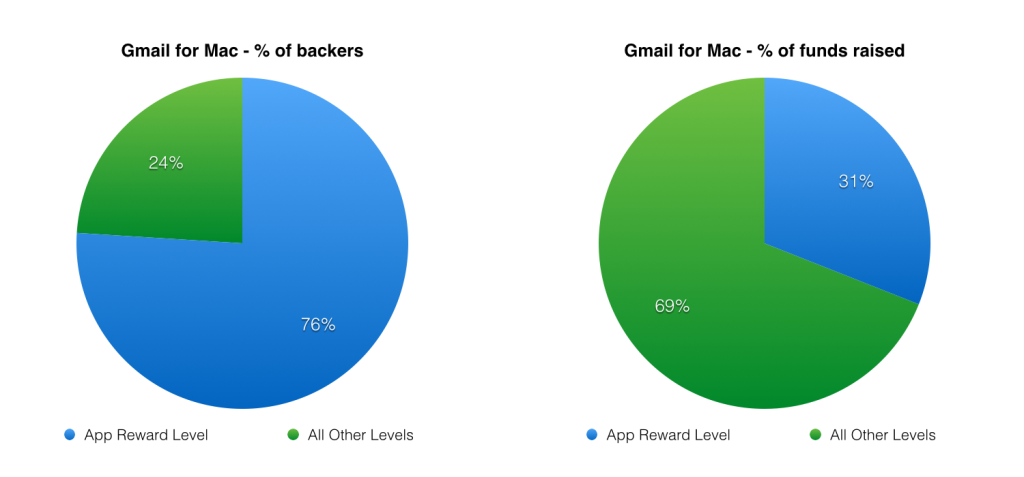
* This breakdown was done with 3 days left, so these numbers will change slightly by the end of the campaign.
Analysis and takeaways from Gmail for Mac:
- Notice that just the app level itself, even with all the backers (76% of the total backers), would NOT have been enough to even hit 50% of Zive’s $20,000 funding goal ($9,374 of $20,000).
- The use of a “no-brainer” level (the ‘extra value meal’ of crowdfunding) resulted in the second most backers and % of funds raised)
- The lesson is clear. You need to offer other relevant and valuable perks at higher reward levels than the app itself.
Let’s look at one more example, this time using a mobile app.
Case Study: TripSaver from Matt Kepnes (mobile app example)
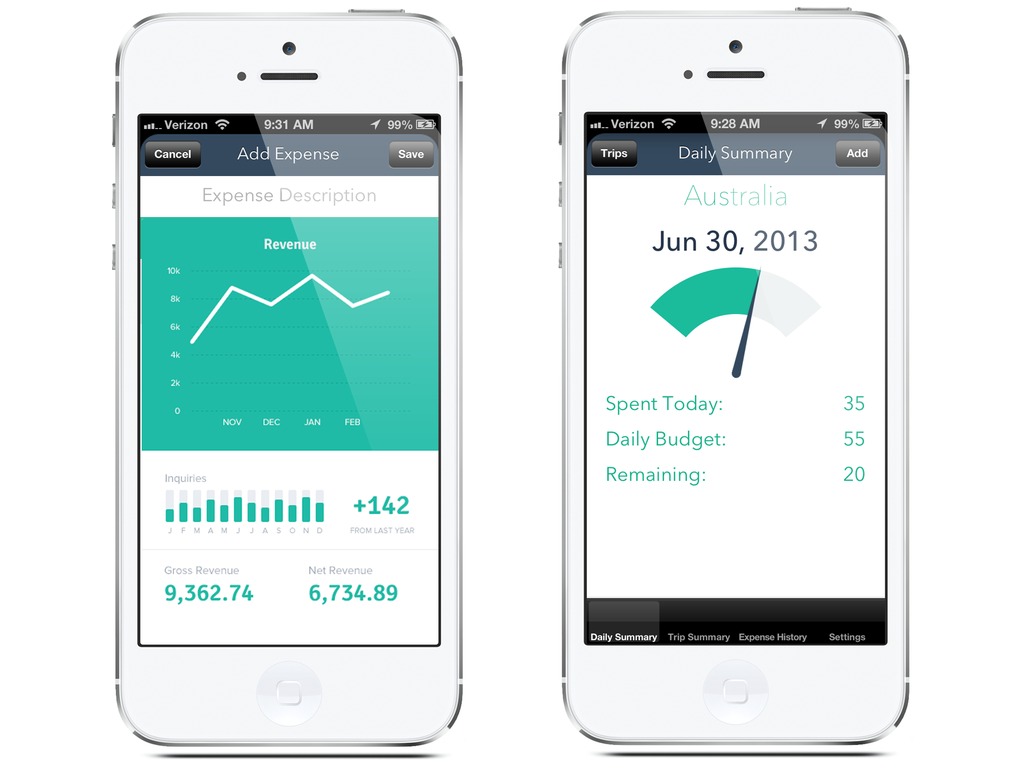
Matt Kepnes is a good friend, a top travel blogger and the author of How to Travel the World on $50 a Day. Because Matt is a travel budget expert, one question he repeatedly got from his tribe was how much to budget when traveling to different parts of the world. As his readership grew, responding to everyone individually became unsustainable so Matt decided to build an app that would serve as a travel cost and budgeting calculator.
He called this app Trip Saver: The Ultimate Travel Budgeting App. You can view his successful Kickstarter campaign here and we’ll break it down below.
Matt wasn’t trying to make a bunch of money from his campaign, he just wanted to cover the cost of iOS and Android development so he could build the app for his tribe that was clamoring for it.
For development of the app on iOS and Android, Matt and his team needed $8,000, so that’s what he set his Kickstarter funding goal at.
Since it’s a mobile app, he decided that full price (MSRP) when it was available in the app store would be $1.99.
So (again, for the reasons described above) Matt offered it to Kickstarter backers at $1, a 50% discount.
Even with a very modest funding goal of $8,000, at $1 a pop, Matt would need 8,000 backers to hit his goal. Even though Matt had an active and passionate tribe, very few crowdfunding projects ever get that many backers.
So again, Matt and I brainstormed other reward levels that we could offer at higher price points and then bundle them with the app.
Here’s what we came up with. We ended up with 13 total levels (but really only 10, since the last four were variations of the same perk to different destinations). As with Gmail for Mac, the lowest and cheapest level is the app itself and it’s offered at a 50% discount to retail.
Because Matt had previously developed other digital goods (like digital guides and e-books), physical goods (his own hardcopy book) and services (his sold-out travel tours), he was easily able to stack other valuable rewards on top of the app itself.
TripSaver reward levels
- $1 level – THE APP BEFORE ANYONE ELSE: You’ll get the app for $1 (retail price will be $1.99) and you’ll get it before anyone else.
- $5 level – PLUS EBOOK: Everything above, plus my ebook, How to Build a Travel Blog (Retail price: $9.99).
- $14 level – PLUS SIGNED HARDCOPY BOOK: Everything above, plus a personalized signed copy of my book, “How to Travel the World on $50 a Day” shipped to your door. (Retail price: $15) A KICKSTARTER EXCLUSIVE.
- $30 – PLUS A T-SHIRT: Everything above, plus a custom Nomadic Matt T-shirt with my logo and the quote, “Keep Calm and Travel On.”
- $50 – PLUS MY TRAVEL BLOG GUIDE: Everything above, plus my exclusive guide “How to Make Money with Your Travel Blog” with included expert interviews (Retail price $67)
- $100 – THE NO BRAINER LEVEL: Everything above: The app, the How to Build a Travel Blog ebook, the signed hardcopy, the How to Make Money With Your Travel Guide, PLUS THREE MORE SIGNED HARDCOPIES (total of 4) of my travel book (retail value $60), PLUS a copy of my upcoming new ebook A Complete Guide to Travel Hacking (Retail $47), which will teach you how to easily gain tens of thousands of hotel points and airline miles and redeem them for free travel.
- $250 – PLUS, ONE HOUR TRAVEL PLANNING CALL. Everything above, PLUS a one hour travel planning call with me personally. Want to travel like a pro? I’ll spill all my knowledge in an hour call where we will plan your trip and make it the most life-changing trip ever.
- $500 – PLUS PERSONAL DELIVERY AND LUNCH ON ME: Everything above, PLUS I will come to your city, take you out to lunch, and talk travel with you. I’ll hand deliver my book, take you to your favorite restaurant, and talk with you about travel, life, and answer any questions you want. (Lunch is on me and US domestic only). +++NOTE: You must be within 60 miles of the following cities: New York, Boston, Providence, Philadelphia, Chicago, Washington D.C., Richmond, Miami, Jacksonville, Orlando, Tampa, New Orleans, Nashville, Austin, Dallas, Denver, Fort Collins, Omaha, Tulsa, Kansas City, Des Moines, Fargo, Milwaukee, Las Vegas, Phoenix, San Francisco, Los Angeles, San Diego, Portland, Ashland, Madison, Santa Fe, Cincinnati, and Seattle. If you are in a city that is not on this list and want to know if we can include you please feel free to submit a question. +++
- $1,000 – PLUS FLIGHT TO AND A PERSONAL GUIDED TOUR OF NEW YORK CITY: Everything above (except the $500 level) PLUS, I’ll fly YOU AND A GUEST to New York City and give you a personal guided tour of the best city in the world. (Includes one free economy round trip flight and one day guided tour and meals. You are responsible for your own accommodations but I will be happy to make affordable suggestions. The personal tour is only one day but stay as long as you want!) (US domestic only)
- $2,000 – PLUS A GUIDED TRIP TO THAILAND WITH ME: Everything above (except $500 and $1,000 level), PLUS an exclusive reserved spot on my always sold out reader tour though Thailand in February 2014. Come with me to my second home – a country I have lived in many times over. In this two week tour, I’ll show you an insider’s view of the country including my favorite bars, restaurants, dishes, and locations. We’ll eat a storm, explore chaotic Bangkok, relax on quiet Thai beaches, and hike beautiful jungles. (Airfare not included)
- $2,000 – PLUS A GUIDED TRIP TO AUSTRALIA WITH ME: Everything above (except $500 and $1,000 level), PLUS an exclusive reserved spot on my always sold out reader tour though Australia in November 2014. Come with me to the land down under and see the harbor bridge in Sydney, eat great food in Melbourne, enjoy the beaches and jungles in Queensland, and swim in the Great Barrier Reef. This two week tour will show you one of my favorite countries, you’ll learn budget tips with me, and walk away with lifelong memories. (Airfare not included)
- $2,000 – PLUS A GUIDED TRIP TO EUROPE WITH ME: Everything above (except $500 and $1,000 level), PLUS an exclusive reserved spot on my always sold out reader tour though Europe in July 2014. Explore Europe and learn budget tips with me as I take you to beautiful destinations, amazing eateries, and wonderful sights and reveal to you the hidden treasures around this continent that seven years of visits have let me found. (Airfare not included)
- $2,000 – PLUS A GUIDED TRIP TO CENTRAL EUROPE WITH ME: Everything above (except $500 and $1,000 level), PLUS an exclusive reserved spot on my always sold out reader tour though Europe in August 2014 (Prague, Vienna, Budapest, Bratislava). Explore Europe and learn budget tips with me as I take you to beautiful destinations, amazing eateries, and wonderful sights and reveal to you the hidden treasures around this continent that seven years of visits have let me found. (Airfare not included)
Again, each of Matt’s perks met the two key attributes of all good reward levels:
- Is it relevant to the project?
- Is it valuable to the backer and priced “below MSRP”?
Did it work?
Absolutely. Matt’s campaign raised $27,669, over 345% of his original $8,000 goal.
Here is a breakdown of Trip Saver’s backers by reward level and the percentage (%) of backers that each level represents.
- $1 – 681 backers – 44% of backers (Again, as designed, the lowest level, the app itself, offered at a 50% discount, had 44% of the backers, the most by far)
- $5 – 364 backers – 23%
- $14 – 323 backers – 21%
- $30 – 66 backers – 4%
- $50 – 62 backers – 4%
- $100 – 40 backers – 3%
- $250 – 2 backers – Less than 1%
- $500 – 2 backers – Less than 1%
- $2000 – 4 backers – Less than 1% (For this breakdown, I combined the three different $2,000 reward levels, which were essentially the same reward to different locations.)
And here is that same revenue breakdown by reward level and the percentage (%) of total funds raised.
- $1 level – $1,033 – 4% of funds raised
- $5 level – $2,035 – 7% of funds raised
- $14 – $5,339 – 19%
- $30 – $2,140 – 8%
- $50 – $3,335 – 12%
- $100 – $4,110 – 15%
- $250 – $500 – 2%
- $500 – $1,000 – 4%
- $2000 – $8,000 – 28%
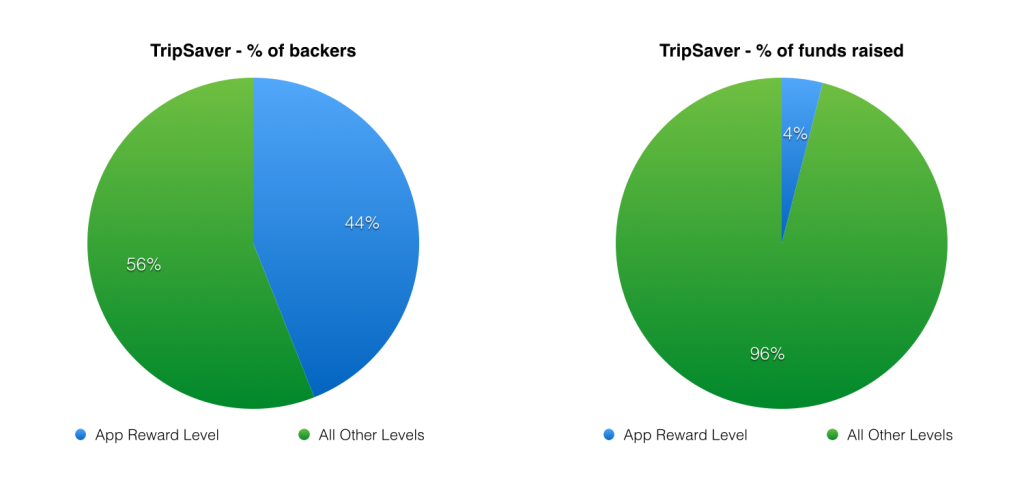
Analysis and takeaways from TripSaver:
- Again, notice that just the app level itself, even with more backers than any other level (44% of the total backers), only raised 4% of the funds, the third lowest level of funds raised!
- The two slightly higher reward levels ($5 and $14 levels) contributed to 26% of the total funds raised.
- Again, the lesson is clear. You need other, relevant and valuable perks at higher reward levels than the app itself.
Summary and Key Takeaways
- Consumers already expect apps to be cheap (and they expect mobile apps to be cheaper than desktop apps)
- You should price your app even cheaper than full (retail / app store) price when crowdfunding, because of fulfillment risk. A 50% discount is a good rule of thumb.
- The app itself should be the first and lowest priced reward level.
- However, this makes the per-unit price low, so you need to increase your average contribution per backer.
- The easiest way to do this is to brainstorm and create other relevant and valuable perks and package them with the app at higher reward levels, while keeping each reward level “below MSRP”.
- If these higher level rewards are digital (like Matt’s e-book guides), that makes fulfillment easier and decreases shipping time and cost.
If you liked this post…
While I love helping individual project creators like Matt and advising startups like Zive, there’s only one of me and I get too many inbound requests for crowdfunding help and consulting to handle them all.
So I’ve decided to take all of my expertise (from helping 80+ projects raise $20M+ total) and put it into an online crowdfunding course. There will be multiple instructional video modules, templates, a reward-level modeling spreadsheet and downloadable scripts and bonuses. If you’re on my email list, you’ll be the first to hear when I launch the course (soon!).
If you’re not on the list yet (or if you want to forward this to a friend), signup here.
When you sign up, you’ll also get three free bonuses instantly:
- My never before published crowdfunding presentation from Yanik Silver’s Underground conference
- An audio interview, where I shares my best crowdfunding tips and tricks with Dan Martell
- A bundle of my favorite crowdfunding tips, tricks and links
Thank you.
As always, thank you for reading. Time is the most valuable resource we all have and attention is the most valuable currency. I appreciate that you’ve given me both today. Thank you.
